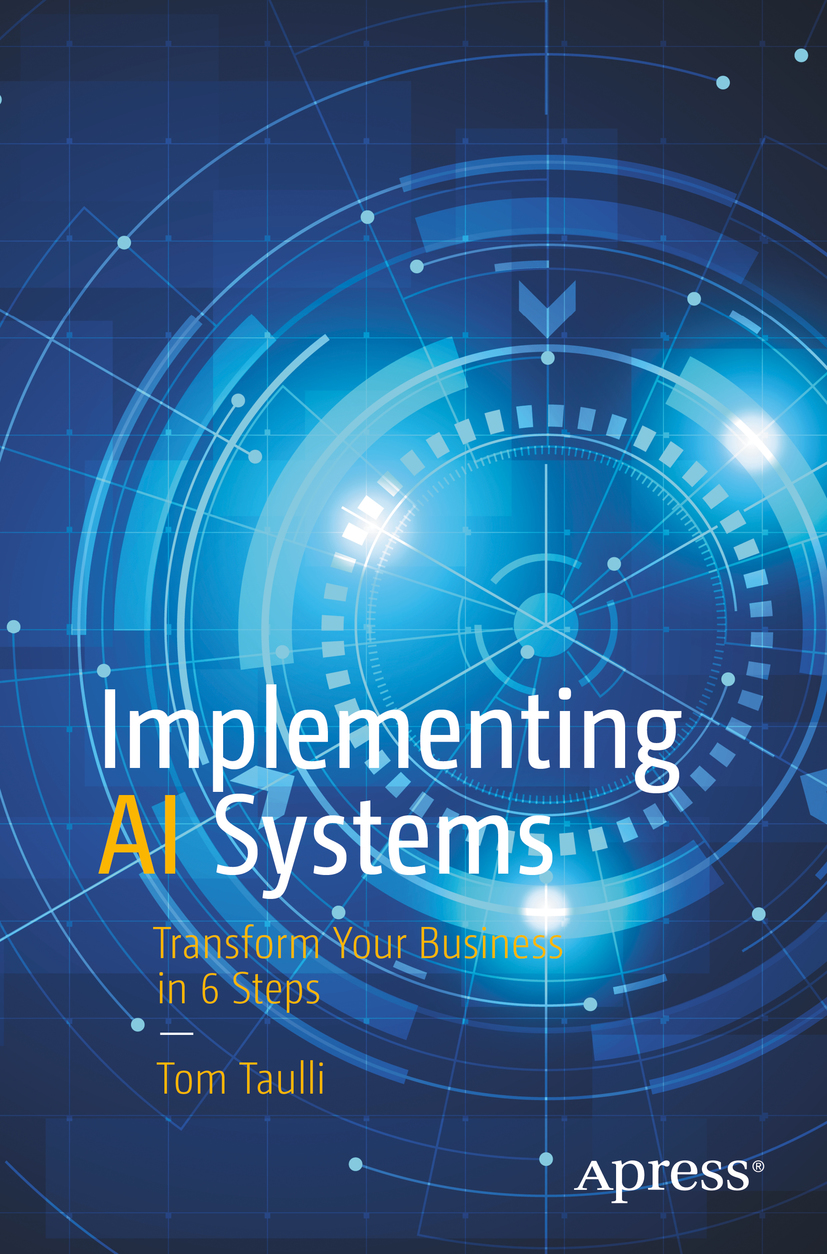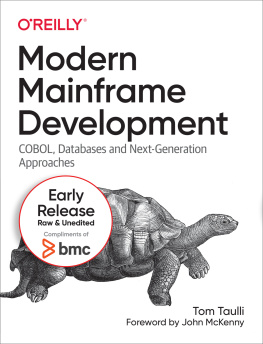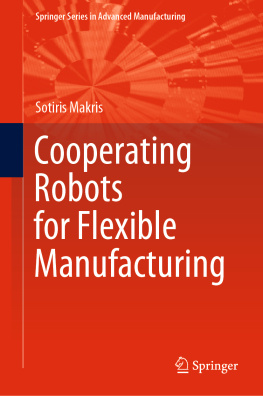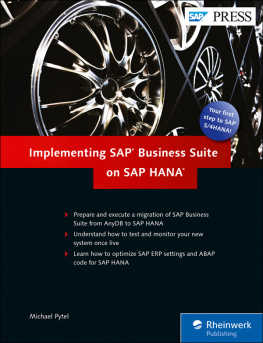Tom Taulli - Implementing AI Systems: Transform Your Business in 6 Steps
Here you can read online Tom Taulli - Implementing AI Systems: Transform Your Business in 6 Steps full text of the book (entire story) in english for free. Download pdf and epub, get meaning, cover and reviews about this ebook. publisher: Apress, genre: Romance novel. Description of the work, (preface) as well as reviews are available. Best literature library LitArk.com created for fans of good reading and offers a wide selection of genres:
Romance novel
Science fiction
Adventure
Detective
Science
History
Home and family
Prose
Art
Politics
Computer
Non-fiction
Religion
Business
Children
Humor
Choose a favorite category and find really read worthwhile books. Enjoy immersion in the world of imagination, feel the emotions of the characters or learn something new for yourself, make an fascinating discovery.
- Book:Implementing AI Systems: Transform Your Business in 6 Steps
- Author:
- Publisher:Apress
- Genre:
- Rating:5 / 5
- Favourites:Add to favourites
- Your mark:
- 100
- 1
- 2
- 3
- 4
- 5
Implementing AI Systems: Transform Your Business in 6 Steps: summary, description and annotation
We offer to read an annotation, description, summary or preface (depends on what the author of the book "Implementing AI Systems: Transform Your Business in 6 Steps" wrote himself). If you haven't found the necessary information about the book — write in the comments, we will try to find it.
Tom Taulli: author's other books
Who wrote Implementing AI Systems: Transform Your Business in 6 Steps? Find out the surname, the name of the author of the book and a list of all author's works by series.
Implementing AI Systems: Transform Your Business in 6 Steps — read online for free the complete book (whole text) full work
Below is the text of the book, divided by pages. System saving the place of the last page read, allows you to conveniently read the book "Implementing AI Systems: Transform Your Business in 6 Steps" online for free, without having to search again every time where you left off. Put a bookmark, and you can go to the page where you finished reading at any time.
Font size:
Interval:
Bookmark:


Any source code or other supplementary material referenced by the author in this book is available to readers on GitHub via the books product page, located at www.apress.com/978-1-4842-6384-6 . For more detailed information, please visit www.apress.com/source-code .
We are now deep into the era of artificial intelligence. The speed of its advance has been phenomenal, opening up a horizon of untold promise and productivity, guiding your business decisions in thrilling, disruptive new directions.
Having been given the honor of writing a foreword to this compelling book, Ill add a few of my own observations as to AIs direction for our specific industry, the service desk, which plays a vital role in business today. Amidst the current pandemic, the service desk has become even more pivotal.
When it comes to integrating AI into business, we are still at the outset, but are poised for major progress. Broadly speaking, todays industry is very manual, hand-crafting specialized AI solutions for specific use cases or functions.
That means every business is tasked to implement its own solutions and hire its own data scientists. AI has met this demand by providing basic competence, open-source libraries for AI and machine learning (ML) platforms for testing AI models, and more.
But I predict that this will not last. The trend is toward turnkey, out-of-the-box solutions because of their superior economy, practicality, ease of use, consistency, and reliability. AI is evolving to virtual assistant capabilities, with such functions as supervised guided flows, unsupervised AI, cognitive search, live agent handoff, and so on.
I foresee two approaches predominating in the future. The first is fully verticalized AI solutions with scalable platforms, for a Salesforce-like SaaS solution. The second is AI platforms that allow customers to build their own solutions.
The role of data scientists will shrink as organizations gain the ability to buy customized vertical AI solutions off the shelf. Thats a positive because there are simply not enough data scientistsa finite and costly resource. The most sensible strategy is to work around them and develop a verticalized platform available to companies.
When it comes to the cloud vis-a-vis AI and ML, containerized solutions are forcing highly scalable and parallelizable AI. AI and ML are designed to hyperscale architectures; most algorithms will be unsupervised and will include inherent learning.
The industry today is highly supervised but it wont always be. Why? Unsupervised learning uses AI algorithms to identify patterns in data sets containing data points that are neither classified nor labeled. The algorithms are allowed to classify, label, and/or group the data points contained within data sets without external guidance. In other words, unsupervised learning lets the system identify patterns within data sets on its own, grouping unsorted information according to similarities and differences when no categories are provided. Today, industries require data setstomorrow, you will not need them.
This is significant because unsupervised learning accelerates implementation (and thus time-to-value) for the AI solution. From concept to fully operational becomes a journey of weeks or months rather than years.
All of this impacts users of the AI-driven service desk with its tickets, knowledge, requests, and solutions. AI algorithms will shift the focus in the enterprise: the user will become the primary focus and the core, with everything built around that user.
Right now, AI and ML are expanding across IT service management, initiating a revolution, delivering the Alexa-like service desk experience that users need, wantand expect. The consequences include elevating the CIO to the strategic position of delivering the customer experience.
The AI-driven service desk reflects in lower costs and operational gainstrimming MTTR (mean time to repair) and reducing the outlay for providing customer support. The ability to create and personalize messages and engineer intelligent virtual customer assistants, automate support and operations tasks, and relieve staff of repetitive manual chores are all benefits of true digital transformation.
Conversational AI breaks new ground for leveraging back-end RPA tools to apply AI and ML to service functions, all via a natural language dialog flow through the omnichannel. Conversational AI encompasses natural language processing (NLP) and natural language understanding (NLU), which comprehends context and inputs in the form of sentences in text or speech formatintegral to natural language processing. NLU search translates into interactive experiences for users and the ability to deliver intuitive human responses to user knowledge requests. The ability to answer common questions and assist in complex problems incalculably accelerates the remediation of issues, and, again, lowers costs.
Today, chatbots are progressing to a true virtual assistant capability, able to guide interactions with users through a workflow via a chat interface. This vision informs my company, Aisera, to deliver the technology capable of advancing from unsupervised AI to enabling conversational flow including NLU search. A cognitive semantic engine addresses user requests and escalates to a human only when deemed necessary. Aiseras mission is to make this process seamless, holistic, and off-the-shelf cost-effective.
Font size:
Interval:
Bookmark:
Similar books «Implementing AI Systems: Transform Your Business in 6 Steps»
Look at similar books to Implementing AI Systems: Transform Your Business in 6 Steps. We have selected literature similar in name and meaning in the hope of providing readers with more options to find new, interesting, not yet read works.
Discussion, reviews of the book Implementing AI Systems: Transform Your Business in 6 Steps and just readers' own opinions. Leave your comments, write what you think about the work, its meaning or the main characters. Specify what exactly you liked and what you didn't like, and why you think so.












